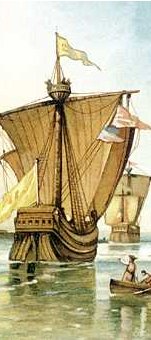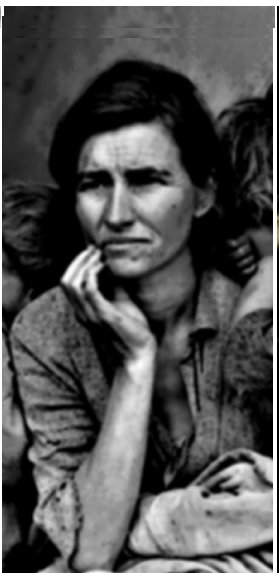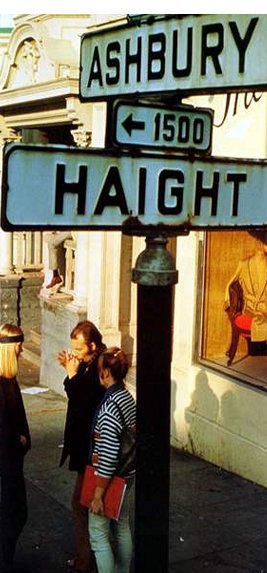The Railroad to Nowhere Rahul Kurian
Born in Alberta,
Louisiana, Brown grew up in Arkansas
where he became friends with Native Americans who helped build his passion for
frontier history. He gained a master's degree in library science at the University
of Illinois at Urbana-Champaign and
became a professor. In 1973, he retired back in Arkansas
and devoted his time to writing. He wrote several novels during his life, with Bury
My Heart at Wounded Knee being his most famous.
To link the East to the West, that
is the ¡§grandest enterprise under God.¡¨1 With the discovery of gold,
the acquisition of Mexican territories and the continued settlement of the
West, the construction of a railroad connecting the East to the West became
necessary. The task of linking the east to the west by railway was a daunting
task requiring the efforts of an avaricious senate, predaceous businessmen, and
assiduous laborers. In Hear that Lonesome Whistle Blow: Railroads in the
West, Dee Brown narrates the journey from the beginnings of the railroad to
the scandals enveloped with each railroad construction and to the impact the
Transcontinental Railroad created on American society. The railroad fever that
swept over America
during the 19th century mixed with the aspirations from the Manifest
Destiny prompted Americans to create a ¡§modern civilization¡¨ with the railroad
opening up ¡§the glories of unlimited growth.¡¨2 Yet even with the
remarkable progress of industrialization, the railroad mania came to a close
and only few were kept in use in the modern era.
In the first three chapters, Brown
begins with the first railroad project America
faced¡X a railroad from the East that would reach the West. On February 22, 1854, the Chicago &
Rock Island Railroad opened for ¡§travel and business¡¨ and a multitude of people
crowded to celebrate the ¡§nuptial feast of the great Atlantic Ocean
to the mighty Father of Waters.¡¨3 The presence of the Chicago
& Rock Island locomotive No. 10
on the banks of the Mississippi River marked the
beginnings of the conquest of the American West. The train, referred to as the
¡§Iron Horse,¡¨ offered an alternative method of transportation as well as
decreased travel time. After Chicago & Rock Island was renamed the
Mississippi & Missouri Railroad (M. & M.), the company decided to have
Henry Farnam become chief engineer of a railroad that
would run from Davenport, Mississippi to Council Bluff, Missouri. Farnam, the man responsible for bringing the first railroad
to Chicago and building the Chicago & Rock Island, built railroads not for
money¡¦s sake but for the joy of building them. But his partner in the railroad
construction, Thomas Durant, sought out the profit from the railroad since
¡§making money was the only reason why a man should spend his time.¡¨4
Durant, assigned the task of negotiating securities in
New York and issuing bonds and
stocks, manipulated the stock market running up the value of his M&M stock
and increased his personal account. Once the M. & M. acquired 400,000 acres
of Iowa soil, Durant soon
dissolved the firm of Farnam & Durant and forced Farnam out of office. Even before the East connected to the
Mississippi, the notion of
building a transcontinental railroad was addressed. In 1836
John Plumbe, a civil engineer by profession was an
advocate for a railroad from the Great
Lakes to the Pacific Ocean.
However, the North and South disagreed as to where the transcontinental
railroad should begin, bringing a pause to construction. Congressman Greenville
Dodge had persuaded President Lincoln to begin the Union Pacific Railroad
Company. Durant later took controlled of the railroad. The Central Pacific
would be constructed in California
that would be connected with the Union Pacific. Collis Huntington, Leland
Stanford, Charles Crocker and Mark Hopkins, four businessmen better known as
the "Big Four," took control in building the Central Pacific
Railroad.
Brown¡¦s second quarter of his book
delves into construction and completion of the Transcontinental Railroad.
During 1864, Durant had accomplished a maneuver that would allow him and his
close associates to ¡§enter upon a colossal looting¡¨ of the treasury and
national land resources.5 He established an organization called
Credit Mobilier. Working with another businessman,
George Francis Train, both men realized that large sums of money could be made
by construction contractors rather than by stockholders or operators. Durant
made contracts with himself at any price per mile he set for construction of
the transcontinental railroad. With his Credit Mobilier
scheme, Durant made an excess profit range of $20,000 to $30,000 per mile. To
make construction more efficient, Durant hired former General and Congressman
Greenville Dodge. Dodge¡¦s militaristic regiment was incorporated into the
railroad workers routine. Towns, such as North Platte,
would emerge along the railroads bringing more investments into the railroad
companies. The Central Pacific on the other hand seemed at first far behind the
Union Pacific and faced a shortage in labor. Crocker, the Central Pacific¡¦s
superintendent, decided to hire Chinese workers. However, the construction of
the railroad intruded upon the heartland of Indian ¡§hunting country, [and] the
food preserve of numerous tribes.¡¨6 But when American forces
eliminated Indian resistance, the race between the Central Pacific and Union
Pacific to Utah finally began.
President Grant had assigned Promontory Point, Utah
as the location where both railroads would meet. On May 1869, Durant proceeded
to drive the ¡§last tie, the last rail, and the last spike¡¨ and the First
Transcontinental Railroad had finally been completed.7
With
the completion of the Transcontinental Railroad, Brown continues in chapter 8
how the first travelers experienced a different environment. Railroad stations
were bustling with people and lack of organization made train departure times
unpredictable. Unless passengers were able to spend $100 for first class, they
were forced to sit in the cramped and uncomfortable coach carts. Food varied
from ¡§wretched to middling-fair¡¨ as each dining stop at the train stations had
different service standards.8 Soon travel guides were printed in
large quantities that addressed questions from what to wear to what popular
tourist attractions to see. As a result, the passion and the love Americans had
for their transcontinental railroad waned in less than a decade. An estimated
one ninth of the nation¡¦s entire land area during the nineteenth century had
been granted to promoters. This land wealth, stolen from the Indian tribes, was
transferred to ¡§enterprising buccaneers¡¨ by members of Congress and not to the
maintenance of the railroad.9 The Big Four used their fortunes and
began wiping out or absorbing all rival railroads in California as well as
paying politicians and judges to give them a monopoly in California. As for the
Union Pacific, the death of Durant consequently allowed another robber baron,
Jason (¡§Jay¡¨) Gould, to take over. In the end though, it was the Native
Americans who had lost their homes. Sioux Indian chief Sitting Bull took his
tribe into Yellowstone where he defended his tribe from
any other investors. However when entrepreneur Jay Cooke wanted to build his
railroad through Sitting Bull¡¦s territory, Washington
supported Jay by threatening genocide of the Indians. But the Panic of 1873
halted Cooke¡¦s plans and Sitting Bull and his tribe were able to remain in Yellowstone.
It was during 1873 when the Credit Mobilier scandal
broke bringing on a public revulsion against railroads and railroad investment
plummeted.
In
the last three chapters of the book, Brown shifts the emphasis from investors
to those affected by the railroad. Immigrants were needed to settle in the new
territories in the West. As railroad land companies became skilled with
¡§matching immigrants with acreage¡¨ the companies found it efficient to
¡§transport entire colonies¡¨ of the same ethnic group.10 The journey
on the railroad carts was a horrible experience for immigrants as they were
crammed with as many as ninety people in one cart. Many immigrants learned of
the lies about the fertile land and were stranded and forced to settle with
whatever land they could seize. Farmers were the principal
victims and railroads paid little or no taxes after being given millions of
acres of public lands and forests. The National Grange was the first popular
organization to fight the railroads and in 1876, the Supreme Court ruled that a
state had the right to impose restrictions "on public undertakings which
were in the nature of monopolies."11 It would be until 1974
before the people of the United States insisted on a plan that would allow elected representatives to
construct the railroad. Yet Brown concluded that in the end, railroads that ran
on coal were killed off by vehicles that ran on oil and motor.
Brown
stresses the irony of the greatest enterprise¡X the Transcontinental Railroad.
Americans during the 19th century had looked at railroads as a
symbol of wealth. But it did not symbolize the wealth of the citizens who paid
for it through taxes, but the railroad constructionists who cheated the public
thousands of dollars. It was prophesized that railroads ¡§are to be run for the
public, and for their benefit and accommodation¡¨ but to Brown, the prophecy has
not passed.12
He emphasizes that the construction of the railroad was
shabby and worn out and were constantly destroyed by either Native Americans or
train robbers. The Gilded Age had been an era of corruption in which everyone,
including Congress, was susceptible to corruption. He claims that the
Transcontinental Railroad was built mainly for the purpose of financial
exploitation. Whether the scams occurred with building the
railroad, confiscating land grants, or charging high rates for railroad
transportation, Brown concludes that in general the rich got richer and the
poor got poorer.
Written
during the 1970s, Brown does include the importance of minorities in the novel.
As a New Left historian, Brown addresses America¡¦s pluralism, the existence of many different
people, ethnic groups, and races. Brown chronicles
the changing and sometimes conflicting attitudes both of American authorities
such as General Custer and Indian chiefs such as Sitting Bull. He mentions the importance of Chinese workers working on
construction of the Central Pacific- the Chinese efficiency at ¡§digging, blasting, and hauling away
rock debris¡¨ made it possible to construct a tunnel through the Sierra
Mountains.13 Another ethnic group Brown notes as beneficial to America was the Mennonites. The Mennonites knowledge
and skills in dry farming converted the dry lands of Kansas into a granary. Brown clearly disapproves of
the crimes against ethnic minorities and criticizes the apathy of rich
businessmen toward hard working American citizens and immigrants. Using cheap material and labor, inflated prices, scams, and bribery,
Brown states that businessmen cheated the nation out of millions of dollars.
In
a review, writer Dan Moore states that Brown adequately summarizes the history
of the Transcontinental Railroad. Moore writes that the book ¡§examines some of the
political reaction to the railroads¡¨ and that Brown covers the conflict between
Native Americans and the railroads adequatley.14 The
addition of different ethnic groups draws attention to different aspects of
American history and includes scenarios portraying American corruption. Moore appreciated Brown¡¦s thorough research and
incorporation of letters and speeches. However, Moore finds that there were too many quotes that
could have used more analysis. Author Anne Courtemanche-Ellis agrees with Moore on Brown¡¦s integration of different ethnic
groups. She states that Brown¡¦s legacy includes the focus ¡§on Indians, women,
or other groups underrepresented in books about the American West.¡¨15
Courtemanche-Ellis adds that Brown¡¦s years as a
librarian allowed him to find primary sources and write a thorough critical
account of the Union and Central Pacific railroads. She admires how the books by
Brown on the American frontier helped change the world¡¦s view about America¡¦s westward expansion.
The book deals with the countless
scams and the impact the railroad had on numerous people. Brown looks at
different perspectives including not only those of the robber barons, but also
minorities such as the Native Americans. Instead of writing America¡¦s triumph of making a transcontinental
railroad, the story portrays the underlining crimes and scandals. The book
clearly notes that even in the 20th century, ¡§railroad owners
reverted to their old ways, forming syndicates, manipulating stocks, diverting
funds.¡¨16 The detail on the many plots both in the 19th
and 20th centuries of cheating people of their money brings the
message that even in modern times, corruption still exists. Dee Brown does an
excellent job in capturing the disgust and anger toward corruption and greed of
individual businessmen and how the corruption contaminates the lives of many
innocent and hardworking citizens. Instead of distorting the facts to fit
American doctrine, Brown writes facts as it occurred in history while intermingling first person quotes into the story.
During the 1830s, Americans in the East began
to support Manifest Destiny, the notion that it was the country¡¦s destiny to
reach the Pacific. It was America¡¦s duty to expand from the Atlantic Ocean to the Pacific Ocean and helped to justify territorial
acquisitions of the West. After the acquisition of California from the Treaty of Guadalupe Hidalgo in 1848,
America had finally accomplished the goal of
obtaining territory that stretched from the Atlantic to the Pacific. In 1849 with the discovery of
gold in California, ¡§hordes of emigrants and goldseekers¡¨
headed west to seek fortune.17 The effects of the Gold Rush
on California were substantial. California propelled from a unnoticed territory
to a center of the global imagination and the destination of hundreds of
thousands of people. A system of laws and a government were created, leading to
the admission of California as a state in 1850. The final step for America was to unite itself and the solution was to
construct a transcontinental railroad. The
railroad¡¦s completion, financed in part with the money accumulated from the
Gold Rush, united California with the central and eastern United States.
California, far away from the politics in Washington
D.C, amassed large sums of wealth during the Gold Rush in 1849. From the beginning the Big Four
¡§[dominated] the railroad that they incorporated as the Central Pacific
Railroad of California,¡¨ the western portion of the first transcontinental
railroad that would meet the eastern portion in Utah.18 Hiring a
work force consisting primarily of Chinese immigrants, the Big Four became one
of the first companies to hire Asians. Eventually the Big Four controlled a network of railroad
enterprises which gave them enormous wealth and political power. The author sees California as the reason for the Transcontinental
Railroad. With many Americans traveling to California, the United States found the state the ideal location where the
railroad would begin in the Pacific. With the Gold Rush, people from all over
the world traveled to California. These newcomers considered the state as
beautiful and fertile. California also traded with Asian countries and the United States found that the railroad to California would be ¡§the route to the Indies.¡¨19 The wealth and location of California compelled the United States to seize California.
In
the end, the transcontinental railroad proved to be a curse on the United States. Millions of dollars were cheated from the
American public and placed in the hands of a few wealthy elites. The dream of a
railroad of comfort that would smoothly transport people from the East to the
West fell short in the long run as railroads were cheaply built- less money
spent would allow more money in the pockets of businessmen. The Iron Horse,
once known as the ¡§romantic breathing engine of the poets¡¨ mutated into a
¡§galloping monster, the terror of steel and steam¡¨ and its symbol of vast power
left nothing but destruction.20 The steam engine at the time of its
creation seemed efficient for a nation endowed with billions of tons of coal
but as time moved on, the diesel soon sucked out the life of the steam engine.
Few rode the long transcontinental railroads as the leisurely adventure faded.
The elegance and the allurement of the mighty transcontinental railroad had
vanished.
1. Brown, Dee. Hear that Lonesome Whistle Blow: Railroads in
the West. New York: Touchstone,
1977, 18.
2. Brown, Dee 4.
3. Brown, Dee 1.
4. Brown, Dee 13.
5. Brown, Dee 57.
6. Brown, Dee 78
7. Brown, Dee 129
8. Brown, Dee 142.
9. Brown, Dee 182.
10. Brown, Dee 240.
11. Brown, Dee 276.
12. Brown, Dee 283.
13. Brown, Dee 77.
14. Moore, Dan. ¡§Book Review: Hear That Lonesome Whistle
Blow.¡¨ Dan Moore! 16
February 2004. 31 May 2008 http://www.mooreds.com/wordpress/
archives/ 000085>.
15. Courtemance-Ellis, Anne. The
Encyclopedia of Arkansas History
and Culture 19 May
2008. 31 May 2008
<
http://www.encyclopediaofarkansas.net/encyclopedia/entry-detail.aspx?entryID=1086>.
16. Brown, Dee. Hear that Lonesome Whistle Blow: Railroads in
the West. New York: Touchstone,
1977, 282.
17. Brown, Dee 39.
18 Brown, Dee 45.
19 Brown, Dee 18.
20. Brown, Dee 280.










